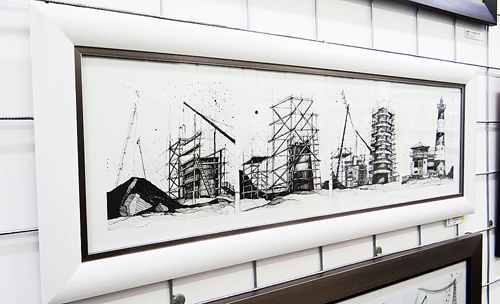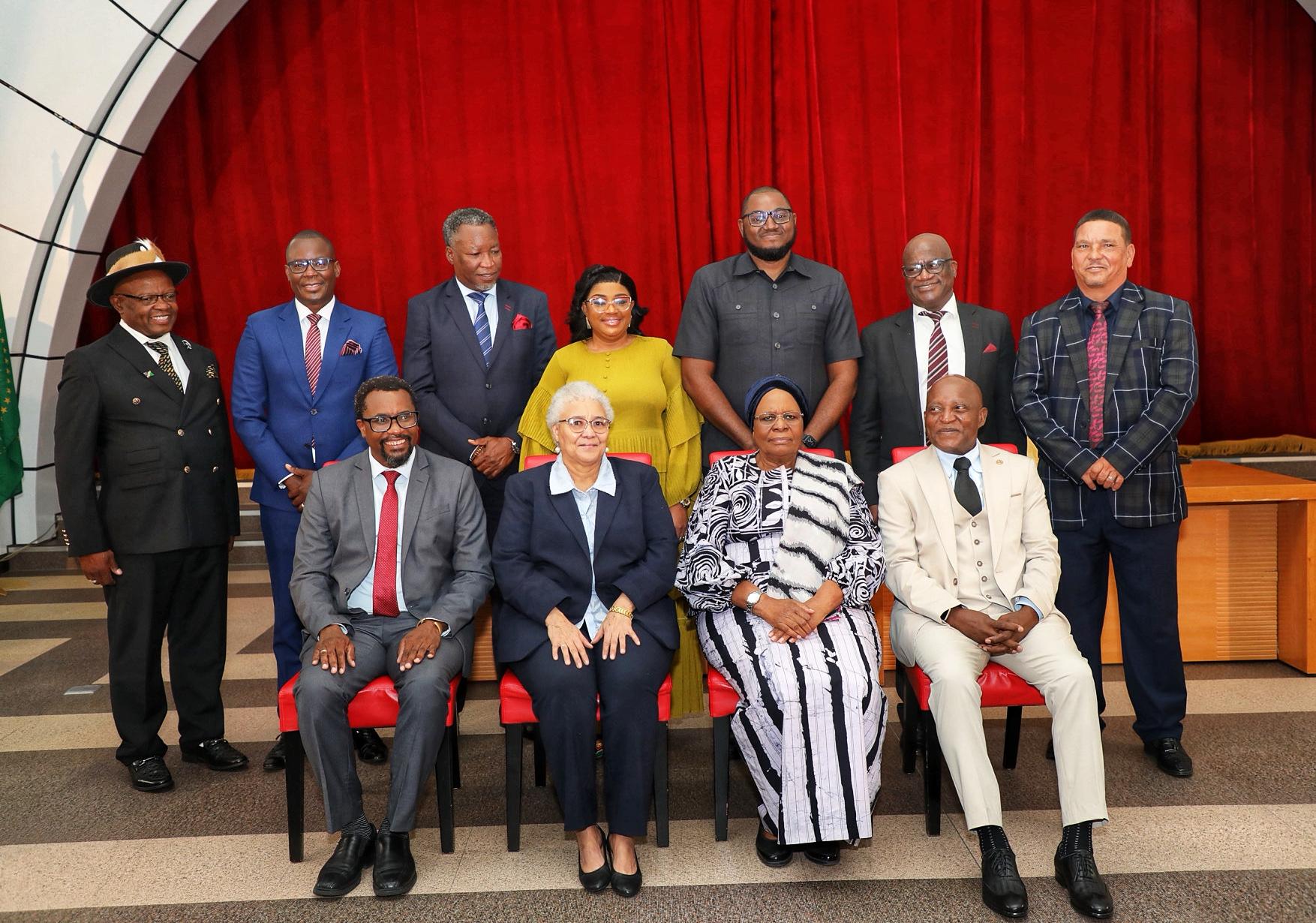Namibian landmarks return in charming charcoal and ink in Elke le Roux’s second solo exhibition ‘Rising Giants’.
Currently on display at House of Arts Frametique at Hyper Motor City, Le Roux’s casts her architectural eye over a selection of the country’s majestic but sometimes forgotten buildings and churches, ghost towns, water towers, mining machinery and train stations.
Rendered in a similarly industrial style as the illustrations featured in ‘Time Machines’, Le Roux’s debut solo exhibition held at House of Art in 2013, ‘Rising Giants’ is comparably concerned with a perspective about the past.
Carefully considering the dominance of structures such as the Christuskirche in Windhoek, Pelican Point Lighthouse in Walvis Bay and the notorious Liebig ghost house, Le Roux juxtaposes the easily recognisable with more obscure structures in Luderitz, Kolmanskop, Walvis Bay, Karibib and Oranjemund in an exhibition that interprets the formation of some of Namibia’s structural giants and more mysterious machines.
In this, Le Roux is somewhat romantic. Preferring the beauty of buildings like churches and structures like shipwrecks rather than the facades of parliament buildings or jail houses, the artist primarily foregrounds architecture offering a little enchantment and a little lore.
Sometimes presenting ghost scaffolding in blue, splattered ink smoke spouting from chimneys but chiefly illustrating in black and white, in its stark simplicity, Le Roux’s technique harks back to a time with less gloss and less fuss. In effect, without colour or the relative fidelity of photography, the structures are imbued with possibility and rendered brand new in a reality in which they are, in fact, ageing and old.
Though there are no humans working, the structures are shown rising up into the sky in long canvases that illustrate the buildings in various stages of erection. Rising from sand and rubble to the formidable and often famed structures we know so well.
As one watches, the infamous Liebig house emerges from the ground and as the piece progresses the weeds in the ground clear, a path fringed by rocks emerges and trees grow around a house that will endure to become a thing of local legend.
As eerie as the eventual myth of the Liebig house is the view of Kolmanskoppe in 1909. It too will become abandoned and a site of spectre and spectacle. As will Le Roux’s ‘Stranded Vessel’ depicting a shipwreck in 198l.
Windhoek’s Christuskirche rises in a similar fashion to the Liebig ghost house and without workers, it ascends and becomes one of the most recognisable sights in the city.
In another picture, not rising, and run over with red, Le Roux depicts the Reiterdenkmal to the right of the Christuskirche.
The interesting thing here is that this is a giant that has fallen, only to be resurrected in a less prominent place far away from the giants of the founding father and the statues of Namibians unshackled and celebrating freedom in its initial space.
“For an incredible country like Namibia where the beauty is apparent and abundant, a lot of the magic in the background is sometimes forgotten,” says Le Roux.
“There are robust figures that live amongst us, patiently maturing with the land waiting to tell their stories. Capturing the formations of these stalwarts of our time, from dust to beam. This is ‘Rising Giants’.”
Deftly depicting giants of both space and time, Le Roux stays true to style, to her fascination with the past and its place in the present while presenting something quaint, novel and a little nostalgic.
‘Rising Giants’ will be on display at House of Arts Frametique until 24 July.
Stay informed with The Namibian – your source for credible journalism. Get in-depth reporting and opinions for
only N$85 a month. Invest in journalism, invest in democracy –
Subscribe Now!










